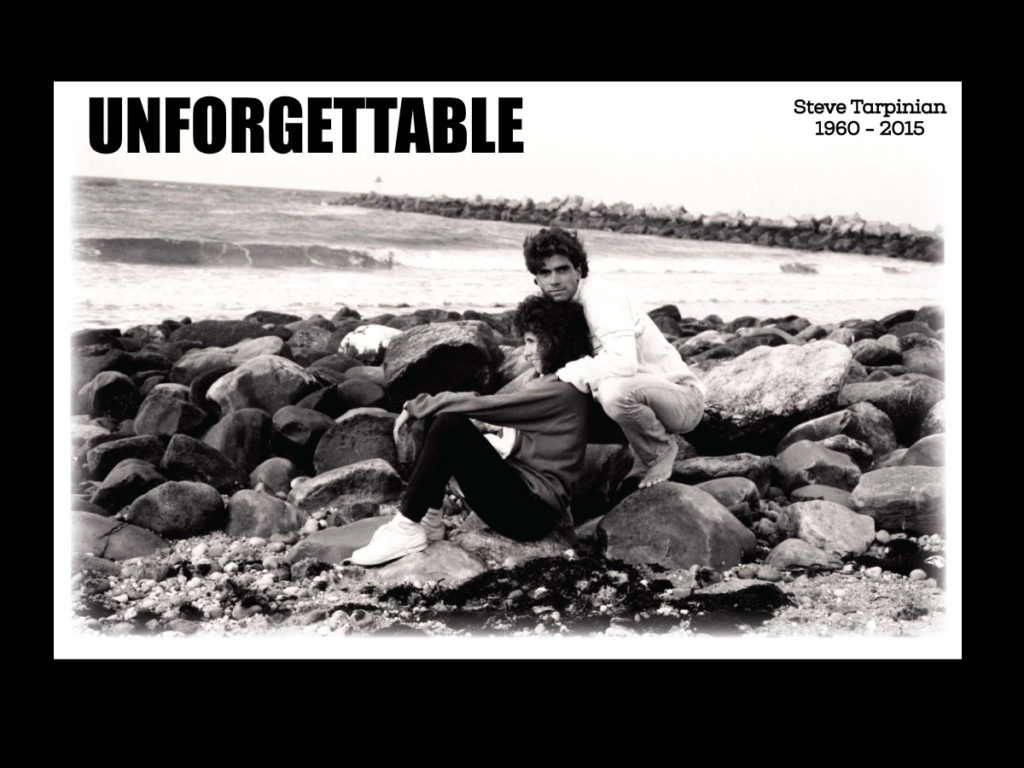 Sally and Pete had found each other. It was the second time for both of them. This time, they both felt like they had hit the jackpot. They simply loved being together and enjoyed their small adventures, like traveling to the shore for lunch or even playing toss in the grocery store. It was always fun, always a good time. Pete lived in the here and now. He was playful and spontaneous. He was Sally’s best friend.
Sally and Pete had found each other. It was the second time for both of them. This time, they both felt like they had hit the jackpot. They simply loved being together and enjoyed their small adventures, like traveling to the shore for lunch or even playing toss in the grocery store. It was always fun, always a good time. Pete lived in the here and now. He was playful and spontaneous. He was Sally’s best friend.
In 2001, Pete was diagnosed with prostate cancer and underwent a radical prostatectomy. Pete never wanted to know the details of his medical condition; he focused on getting better and had Sally act as his point person. Sally researched his illness and did everything she could to keep Pete healthy and alive. The doctors finally convinced Sally to accept and believe that Pete could live a long life, given that his type of prostate cancer was slow growing.
In the fall of 2005, Pete discovered a sore in his mouth. The dentist sent him to an oral surgeon, who, in turn, scheduled Pete for a biopsy. The oral surgeon was vacationing when the pathology report came in. The pathologist called Sally and said, “What are you guys doing? You can’t wait. Your husband has stage 4 oral cancer.”
Sally was furious. Totally enraged. Pete had been smoking cigarettes on the side. She didn’t know. She was madder than hell at what he was doing to her and the kids. He was destroying his life as well as hers.
They were referred to a specialist for surgery. The surgery was botched. Pete left the hospital with an infection. There was chemo and radiation and a referral to an amazing doctor in New York City. There were more surgeries. They cut open Pete’s jaw and neck to take out the infection; they stripped muscles from his chest and wrapped and packed them into his neck for his body to absorb and fill the spaces where there had been infection. His neck was like raw meat. Over and over, there were surgeries—and there were infections. Through all of this, Sally had the utmost confidence in Pete’s doctors and knew they were doing everything in their power to save his life and restore him to health.
Sally learned how to dress and change his wounds with special gauze pads and sterile gloves twice a day. She dealt with doctors, as Pete never wanted to know the nitty-gritty. He was focused on beating the cancer.
Sally had returned to work when Pete got sick. She never missed a day of work. She couldn’t. She used her vacation days for surgeries.
There was unbelievable stress. “I wanted him to live. I wanted my life back. I did everything I could. My emotions were all over the place—I loved him with all my heart and soul, but at the same time I felt betrayed and was so full of anger because Pete continued to smoke after he had been diagnosed with prostate cancer in 2001. I totally believed he had quit. I had been working so hard to help him beat the prostate cancer that when the oral cancer diagnosis was delivered, I felt like I had been punched in the stomach. I had been fighting for his life and he was destroying his life with smoking behind my back.” It took a tremendous toll on them both.
In the summer of 2007, Pete realized he couldn’t beat it. He had no quality of life. He had already undergone several major surgeries, and more were on the horizon. He wasn’t going to live this way and be a burden to his family. Pete started talking suicide. Sally would hear nothing of it. This was too painful. Sally had lost her dad to suicide.
Pete took his case to the Ethics Committee of the hospital, and they ruled he could stop the feeding tube and refuse any artificial feeding methods.
Sally was beside herself, stressed, and furious with Pete. “It was hard enough watching him die.” Pete was unable to eat or drink anything from March 2006 until he died in September 2007. During the last few months of his life, it became increasingly difficult for him to talk; in fact, Sally’s nerves were so raw that it became difficult for her to understand what Pete was saying.
“We resorted to having Pete write out his part of the conversation and I would answer him. My nerves were shot. I had a hard time focusing and was fighting for my own survival. I was not in a good state of mind. At times, I was a total witch with him. I couldn’t eat. I was taking care of Pete, doing the best I could while working full time. I didn’t know which way to turn. I just wanted off the merry-go-round and a return to normalcy. I wanted my husband and our lives back!”
Another surgery was scheduled for early October, 2007. It was Labor Day weekend, Pete was home that Saturday, and Sally was working. Normally, Sally’s daughter would stop by unannounced to check on Pete. However, that weekend the kids were away. When Sally got home from work that day, there were notes on the doors.
Pete had left identical notes on both the front door and garage door: STOP. DO NOT COME IN. CALL THE POLICE. Sally knew immediately and ran to her neighbor’s, banging on the door, telling them to call 911 and saying, “Pete killed himself. I know he killed himself.”
The police arrived. They took Sally’s door keys, opened the front door, and her dog came flying out of the house. The police cut Pete down and put him on a stretcher. (Pete had used the most vulnerable part of his body—his neck with the tracheostomy opening and skin grafts—and hanged himself. He had been hanging there awhile.)
Sally was told that Pete was conscious and still alive, but the scene was too gruesome and they would not let her see her husband at that moment. They medevac’d Pete to the hospital. He flat-lined in the helicopter, and they brought him back to life. When Sally arrived at the hospital, she fully expected that Pete would be awake. It turned out he was on life support. The hospital kept Pete alive for another day so that the kids could make it home to say their good-byes.
When Pete died, Sally had so many emotions she thought she was going to die. Her weight had plummeted to 102 lbs. Sally was furious with Pete for taking his life. How could he? Sally was at a full boil, full of fury and deep despair following Pete’s death. She spent the next year living her life on autopilot, going to work, eating meals over the sink, walking the dog when necessary, and retreating to her bedroom. There was precious little relief.
For a solid year, every day, Sally looked for a note from her husband. “I thought he died hating me because of everything we had gone through. I was a witch, fighting for my sanity. My pregnant daughter needed a biopsy in July, and that was two weeks of torture. There was so much going on. ”
One year to the day after Pete’s death, Sally was in the garage, getting ready to do yard work. She noticed a police car driving around the circle of her street. She knew they were there for her. Sally went to the front of her house and there was the police car.
Chris, the police officer, told Sally that something told him to get the note and come today. “If you don’t want it, I won’t give it to you.”
Sally said, “I’ve looked for a year for a note. I thought Pete died hating me for everything I said and my inability to maintain my sanity throughout our ordeal.” Of course, she wanted the note.
Chris handed Sally the original note that Sally never knew existed.
Sally couldn’t read the note by herself. She read it with her daughter. Pete had written paragraphs to everyone—Sally, the kids, neighbors, favorite aunts, uncles, and cousins. He said it was his time to go. He told the kids how proud he was of them and reminded them that “Mom will need you now.” He thanked the neighbors for their help and support; he told anecdotes of happy memories with his relatives. And to Sally, Pete told her he loved her, he was sorry for all the hurt and pain. He apologized for his stupidity in smoking. And, if there is another side, he said he will be there waiting for her.
Given her initial rage, Sally later said that if she had found that letter when Pete had first died, she would have torn it into a million little pieces. Now, his note is very precious to her, and she is so thankful for it.
“My husband gave me the ultimate sacrifice: he killed himself so I could live. I owe it to him to live. It took me a long time. I was not sure I wanted to live. Now, I look forward to life…never thought I’d say that. There is happiness beyond it all. You have to want it and you have to work for it.”








